Museum demands a new era of truth regarding slavery
Dave and Ken's Excellent Adventure hits the home stretch in Alabama
Please consider supporting The Front Page with a paid subscription: HERE
It doesn't take long before you feel uncomfortable inside the Montgomery, Alabama museum.
Physically uncomfortable.
The Legacy Museum, just six years old, uses blunt-force messaging to overwhelm even the most historically articulate among us, demanding us to reconsider anything we previously understood about the black experience in America.
It does that with an unending parade of horrors the reality of which made me question the meaning of America and whether those principles of life, liberty and the pursuit of happiness had any basis in reality.
I want to be careful here, because I don't believe The Legacy Museum sets out to shame anyone. It says on its website the museum's purpose "is to create a space for people to learn, reflect, and gather to address the legacy of slavery, lynching, and racial segregation. The museum's goal is to foster a new era of truth and justice in America."
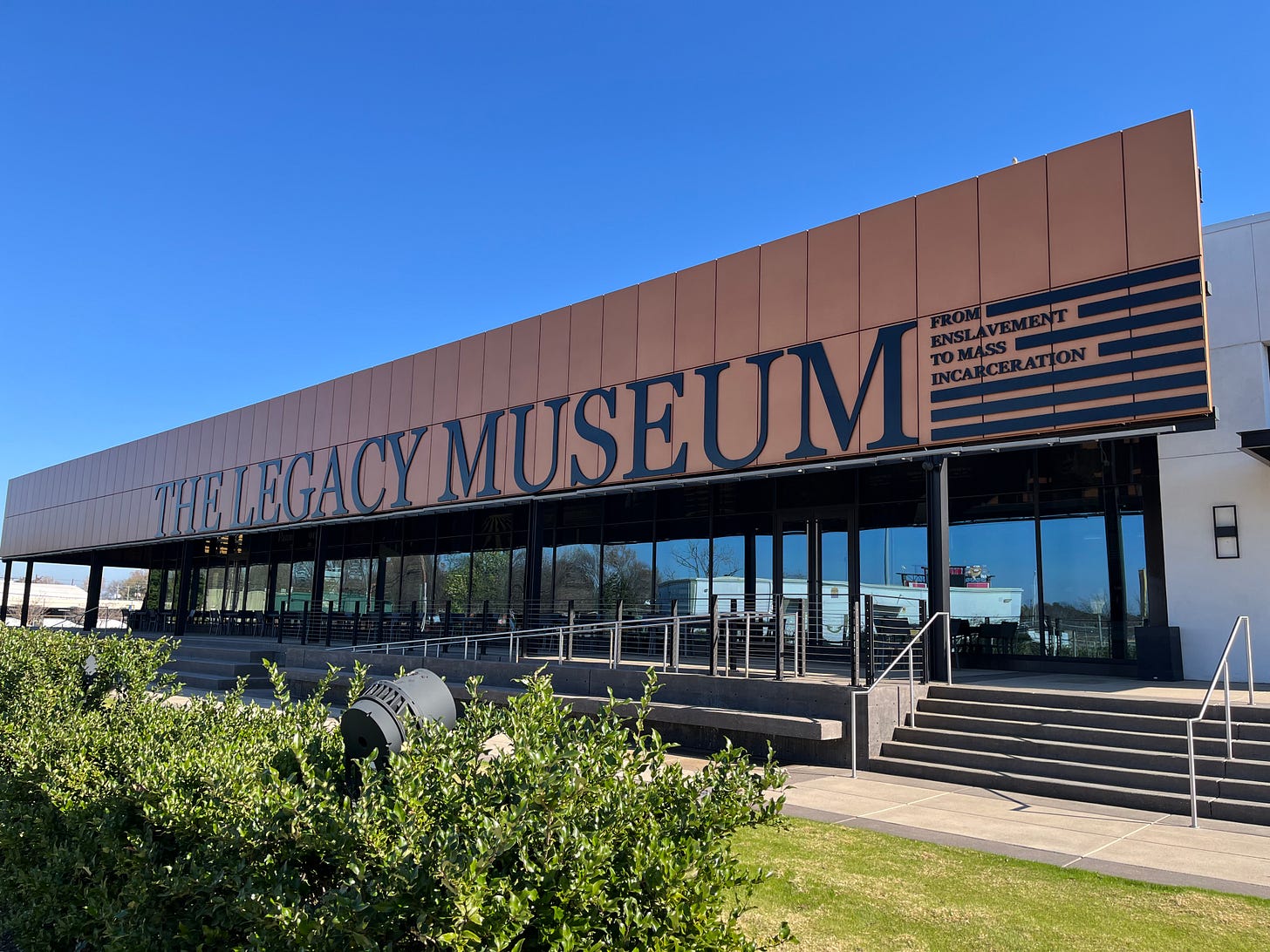
It doesn't just create that space, it demands you occupy it, to put yourself there as a human being and consider the inhumanity perpetrated on a people and whether our own ancestors, even if they didn't participate directly, may have condoned it by their silence.
After Sunday's experience, I can attest it made me question my own understanding of America.
At its essence, The Legacy Museum is a museum about slavery, but you will not find those words sprawled across the outside of its building. It's as if the word "slavery" is not sufficiently horrible enough; it's too weak, almost a cliche to the totality of the American story, and maybe even worse, something we take for granted as just something that happened.
Instead, they start the story with the reality that "trafficking Black people" was the largest mass migration of a people against their will in the annals of the world.
There were 12.7 million men, women and children - a New York City worth of kidnappings - jammed inhumanly atop one another aboard sailing ships for months at a time. The museum estimates some two million of those souls never reached their destination "making the Atlantic Ocean the burial site for hundreds of thousands of Black people who have too often been forgotten."
And while those numbers get your attention, what happens next in this story is worse and it keeps getting worse.
I learned that slavery was not abolished in New England until 1827.
That slavery was a legitimate and lucrative business in Boston when John Adams was president.
And that the place where this museum now stands was a cotton warehouse that held human beings in small pens while waiting to be sold.
That's when you are confronted with the words of Harriet Tubman: "Slavery is the next thing to hell."
But even that seems too weak.
It turns out that despite my historical readings, my visits to battlefields and historic sites and being a newspaper editor for 40 years, I did not know nearly the extent and misery of slavery in our country.
The museum reprises accounts of slaves working 16-hour days in sweltering heat in the fields of the south, of being separated from their families and of being tortured with the lash. There were no stories of kind and fair "masters."
Each moment you spend in The Legacy Museum tends to be darker than the last and while that may not be your idea of a good time, it does provide a path to enlightenment that is invaluable.
That's when you run head first into the lynchings in America.
This came after the Civil War and the utter failure of Reconstruction; after former slaves were freed and given their full rights of citizenship, unless they did something a random white citizen did not like.
We are shown the newspaper headlines.
Not one, or two, but dozens upon dozens covering an entire wall.
Sometimes, it seems like our understanding of that part of our past begins and ends with To Kill a Mockingbird.
Finally in one of the museum theaters, we are shown photographs and hear accounts of the lynching of John Hartfield, a young black man from Mississippi.
According to the Equal Justice Incentive, Hartfield was accused of raping a white woman and fled the state. It was only a matter of time until he was caught, but instead of a trial, it was announced he would be lynched.
It was reported in the New Orleans States newspaper, "3,000 will burn Negro" and then on the day of the event in the Jackson (Miss.) Daily News,"John Hartfield will be lynched by Ellisville, Miss. mob at 5 o'clock this afternoon."
It was announced with the excitement of an early rock concert and so so excited our ancestors that 10,000 attended to be entertained.
By a lynching.
Hartfield was tortured first. Each of his fingers were cut off and distributed to those in the crowd as souvenirs. As he hung there that day, the crowd unloaded their firearms on his lifeless body. They shot so many times, the bullets eventually shot through the rope and Hartfield's lifeless body crashed to the ground and was immediately set on fire."
Photographs of the lynching were later made into postcards. It is unclear what purpose that served.
This was the America we don't talk about; an American we can't even imagine, never mind accept.
Do you see what I mean about rethinking history, about wondering about our real identity as Americans, and maybe even more importantly, as human beings.
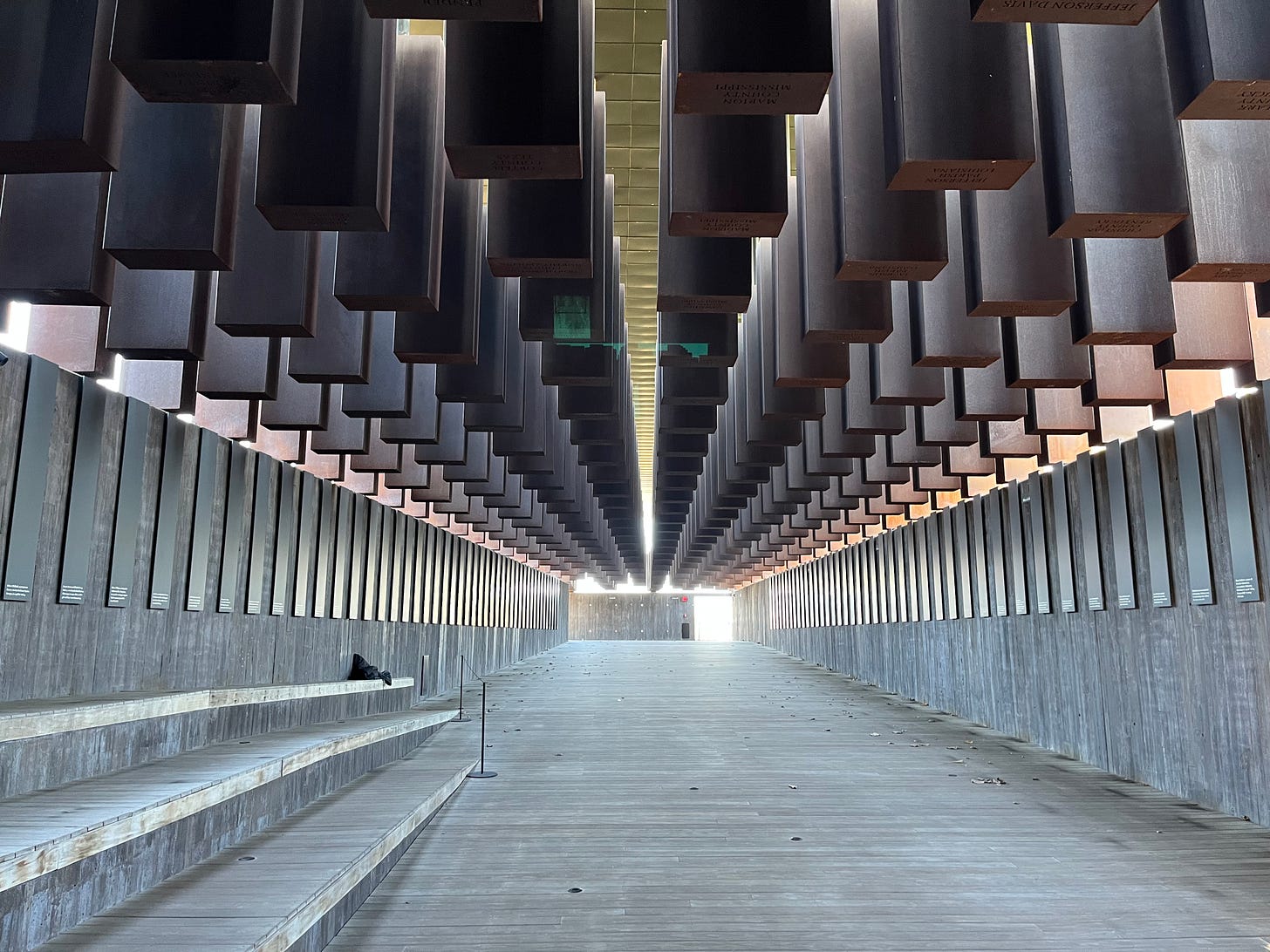
When you arrive at the National Memorial for Peace and Justice, you've already begun to reflect on the inhumanity of our country while wondering if there is any way this legacy can be undone.
On a hilltop overlooking the city of Montgomery, the bludgeoning of our fictitious past continues.
The memorial recounts how more than 4,400 Black people were killed using a term I had not heard before - "racial terror lynchings" - between 1877 and 1950. And those are only the ones that are confirmed.
Sprawling over six acres, the memorial includes 805 hanging steel rectangles, representing each of the counties where documented lynchings took place.
It is a sea of lynchings and even includes one in Orange County, New York.
As you wade through the memorial, it is as if you are lost in a sea of tragedy that overwhelms every corner of our country. But after spending the past few hours in The Legacy Museum, it is now somewhat personal.
You have a connection.
So I start looking for the rectangular sphere representing Jones County, Mississippi.
I'm looking for John Hartfield the way many looking for names on the Vietnam Memorial in Washington.
I finally find him halfway through on the far side of the memorial as the rectangles lift higher and higher above our heads and the sunlight opens up around them, as if some type of heavenly perspective is being perpetrated.
Hartfield is there with four other names in Jones County. I pause and contemplate it all in the sea of rectangular misery.
Further down there are short summaries of some of the people memorialized:
- William Miller was lynched in Brighton, Alabama, in 1908 for organizing local coal miners.
- In 1906, a mob of 2,000 people lynched Jack Gillingham, John Gillespie and Nease Gillespie in Salisbury, North Carolina.
- General Lee was lynched in Reevesville, South Carolina, in 1904 for knocking on a white woman's door.
- Fred Alexander, a military veteran, was lynched and burned alive before thousands of spectators in Leavensworth, Kansas, in 1901.
- Bird Cooper was lynched in Claiborne Parish, Louisiana in 1908 after he was acquitted of murder charges.
- Thomas Miles, Sr., was lynched in Shreveport, Louisiana, in 1912 for allegedly writing a note to a white woman.
- Anthony Crawford was lynched in Abbeville, South Carolina, in 1916 for rejecting a white merchant's bid for cottonseed.
- A black construction worker was lynched at Camp Blanding, Florida, in 1941 for insisting that a white co-worker return his shovel.
And of course there is a sentence for John Hartfield and his horrible end in 1919.
Perhaps, it is not shame we should feel, but anger at the hypocrisy of the Founding Fathers and a Supreme Court that ruled repeatedly against enslaved peoples over several generations.
But the Peace Memorial was only the first step.
The Equal Justice Initiative joined with communities all over the country to recognize on a local level of what happened in all these small-town squares through the country. Sort of a counter punch to every Confederate general on a horse.
The mission continues in communities all over the country to educate and edify local citizens that the good old days often includes a fare amount of racism, murder and mayhem. It includes one for John Hartfield in Ellisville, Mississippi.
As we finished our tour of the lynching memorial, I couldn't help but notice outside a small nondescript ranch house across the street there was something that seemed out of place facing a memorial for 4,000 Blacks who were lynched - a Trump sign.
My Rickey story
Rickey Henderson, one of the most exciting baseball players of his generation, passed away Saturday at the age of 65.
He was as exciting on the field as he was eccentric off it.
When I was covering the Major League Baseball All-Star game in Cincinnati in 1988 I found myself on a bus with the players and their families as they returned to the hotel from an event the night before the game.
Rickey was sitting in front of the bus with his wife caring for their small child right behind him. When the bus pulled up in front of the hotel, there was a large crowd of autograph seekers.
When the bus stopped, Rickey stood up and took the baby from his wife and as he waded through the crowd he told them he could not sign autographs because he was holding the baby.
Maybe not the best memory, but the one I remember most.
Gas prices
The farther south we get the lower the gas prices continue to get. Some of that is a reflection of the reduced taxes in the southern states.
When we gassed up today in Alabama we were paying just $2.59 a gallon and we marveled at what a great job President Trump is doing with the economy.
Well, that's what we figured people in Alabama were saying.
Lookout Mountain
The view from atop Lookout Mountain is extraordinary.
My brother and I have seen a lot of Civil War battlefields and we immediately concluded this one had the best view.
We also learned that the battle for Chattanooga was the final nail in the coffin for the Confederacy.
As the National Park Service ranger recapped the events from 160 years ago, we couldn't help but feel sorry for him as the wind whipped around the overlook. Clearly, the Tennessee native was not used to temperatures in the 30s.
Deep south
The trip into Alabama Saturday marked my 41st state. I should knock off No. 42 Monday when we cross through Mississippi on our way to New Orleans.
Saturday's drive was by far the easiest when it came to traffic, although the hairpin turns going to the top of Lookout Mountain were a little precarious.
We were 1,215 miles from Glens Falls on Saturday and after visiting Selma on Monday, we plan on making the final push to New Orleans and a Cajun Christmas.
Ken Tingley spent more than four decades working in small community newspapers in upstate New York. Since retirement in 2020 he has written three books and is currently adapting his second book "The Last American Newspaper" into a play. He currently lives in Queensbury, N.Y.

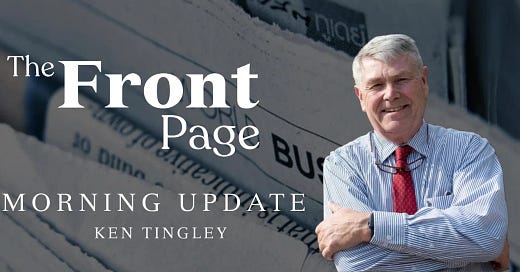



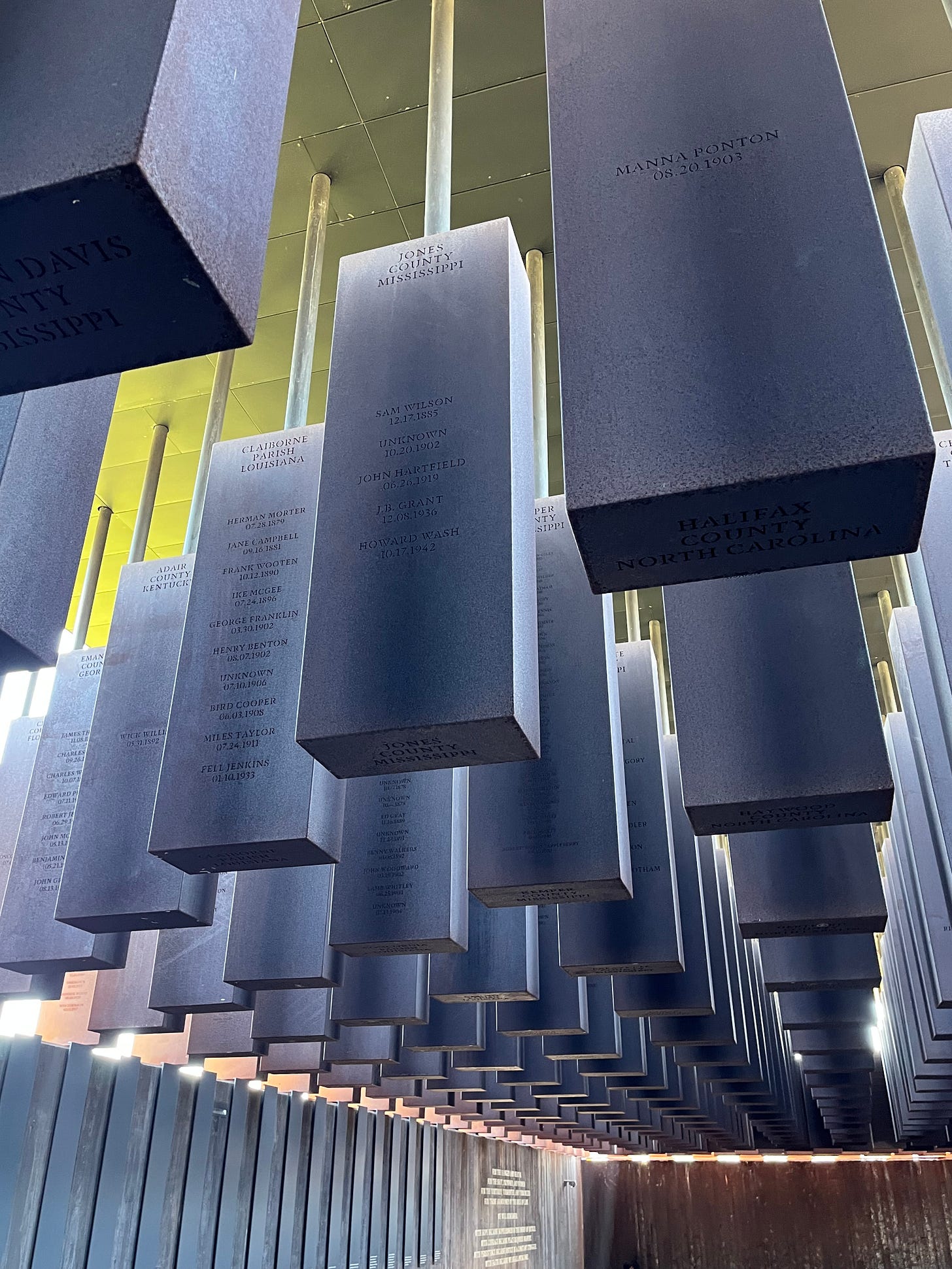

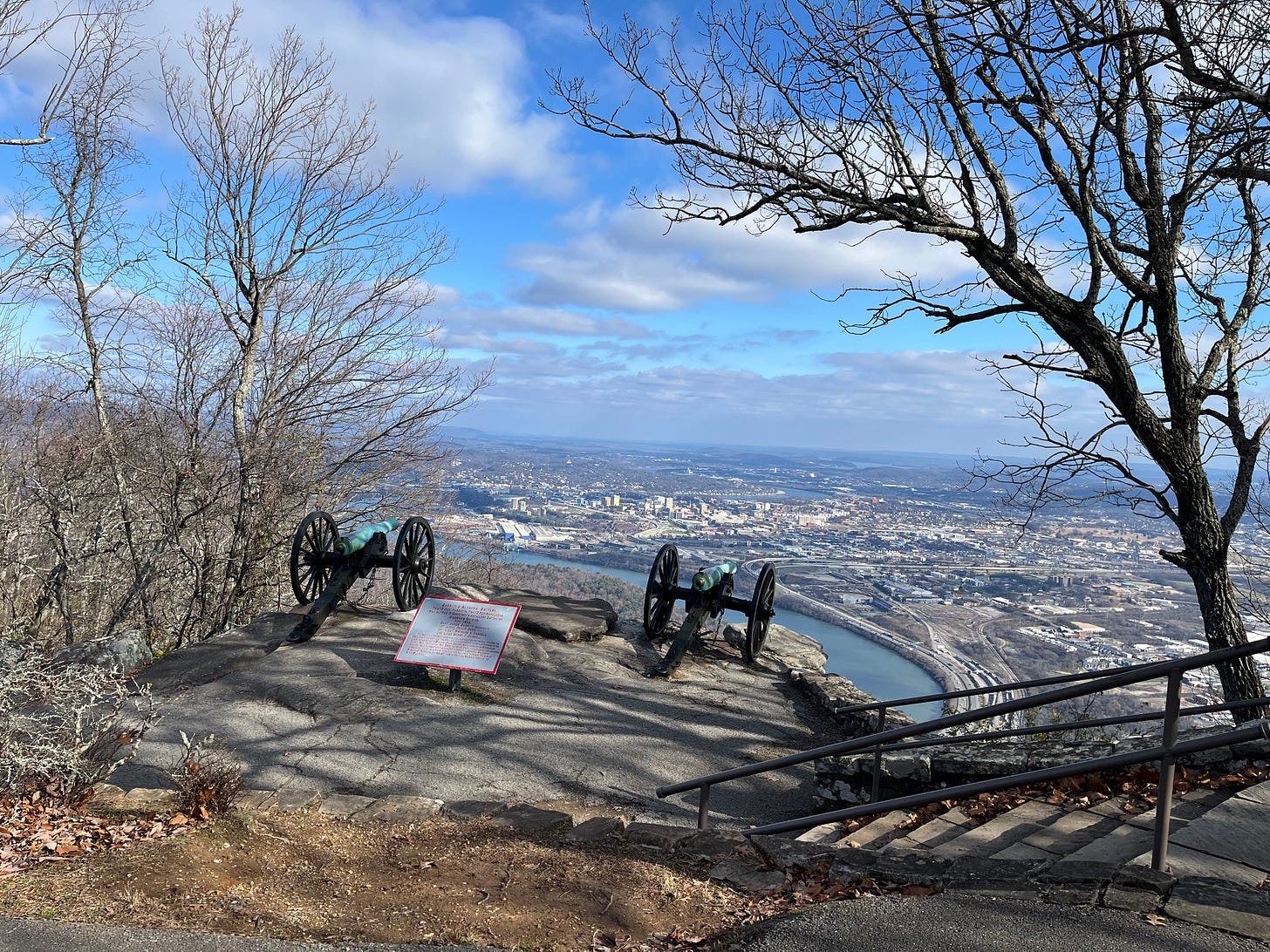
Thank you for your excellent journalism here.
I keep hypothesizing we are in a Second Reconstruction. (Read Ta-Nehisi Coates’ Eight Years in Power and then fast forward to Jane Mayer’s Dark Money, the GOP response to a Black President).
And then, see our government’s tepid response to Trump’s actual violence against immigrant children, gassing peaceful protestors, and Jan 6th, and I see a recipe for generations of failure at this experiment we call democracy.
We could have done better. Because we have history to teach us.
Dear Ken,
I think now, you can understand why many minorities hold a tempered and guarded understanding of American history and it's values, past and current. American culture has changed greatly for the most part, and not easily, but an undercurrent of racism and prejudices, seismic and homophobia still rear their ugly heads. That is what the future administration has and will stoke in it's quest for complete power. This is what We, the People, have to fight against in every way possible, loudly and quietly, bravely and consistently. I hope more of us feel what you now feel.